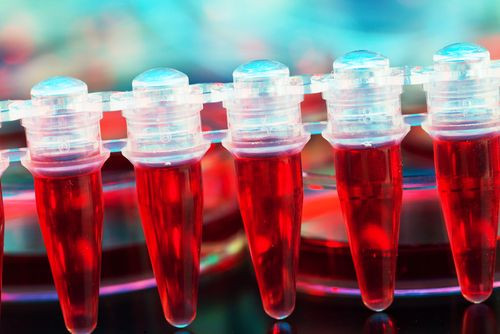Cloning Breakthrough: Adult Stem Cells Perfectly Replicated, Moving Science Toward Disease-Specific Cells

In a cloning first, scientists at Research Institute for Stem Cell Research at CHA Health Systems in Los Angeles have perfectly duplicated adult stem cells using subjects’ own DNA.
The study, published in the journal Cell Stem Cell, sits as part of a shifting scientific paradigm where stem cells are no longer used to pursue reproductive cloning, but “therapeutic cloning.” Under this new model, formally known as somatic-cell nuclear transfer, researchers attempt to use a patient’s own DNA to create cells that can fight diseases, such as vision loss, heart disease, diabetes, and multiple sclerosis. The latest advances were minimal but legitimate.
Led by researcher Young Gie Chung, the team extracted skin cells from two men, ages 35 and 75. The process of therapeutic cloning then involves taking those cells and fusing them, with a jolt of electricity, to an ovum whose DNA has been removed. The egg then divides and multiplies, until it creates an embryo that looks like a hollow sphere.
These embryos still contain the patient’s DNA, which means if they were implanted into a uterus, they could develop into perfect clones of the original subject. However, this process has been officially banned by the United Nations following the original controversy of the 1997 cloning of Dolly, a sheep. In 2005, the U.S. banned the use of federal funds for either reproductive or therapeutic cloning.
So with funding from the South Korean government and a separate foundation, the team set to work on generating healthy embryos from the two men’s DNA. It worked — though not until exhausting 39 tries, producing stem cells only once for each donor. This has led to some skepticism about the study’s success, as stem cell biologist George Daley of the Harvard Stem Cell Institute called it "an incremental advance" and "not earth-shattering,” Reuters reported.
Meanwhile, other experts believe the pluripotent cells — chameleon-like cells that can adapt to become any type of cell — open new doors for future research. "The advance here is showing that (nuclear transfer) looks like it will work with people of all ages," Shoukhrat Mitalipov, a reproductive biologist of Oregon Health and Science University, told Reuters.
Ultimately, one of the largest hurdles is cost. The limited success at present suggests the only people who can currently enjoy the therapeutic effects are wealthy older men, as trials involving women have yet to run. What’s more, egg donation is highly invasive and a process many women choose not to undergo. But this second hurdle may be less logistical and more scientific, according to co-author of the study, Dr. Robert Lanza.
Immune systems only come in a limited amount of flavors, meaning not all women would need to donate their eggs in order for everyone to find a match. By Lanza’s measure, “100 human embryonic stem cell lines would generate a complete match for over half the (U.S.) population.”
Source: Chung Y, Eum J, Lee J, et al. Human Somatic Cell Nuclear Transfer Using Adult Cells. Cell Stem Cell. 2014.



























